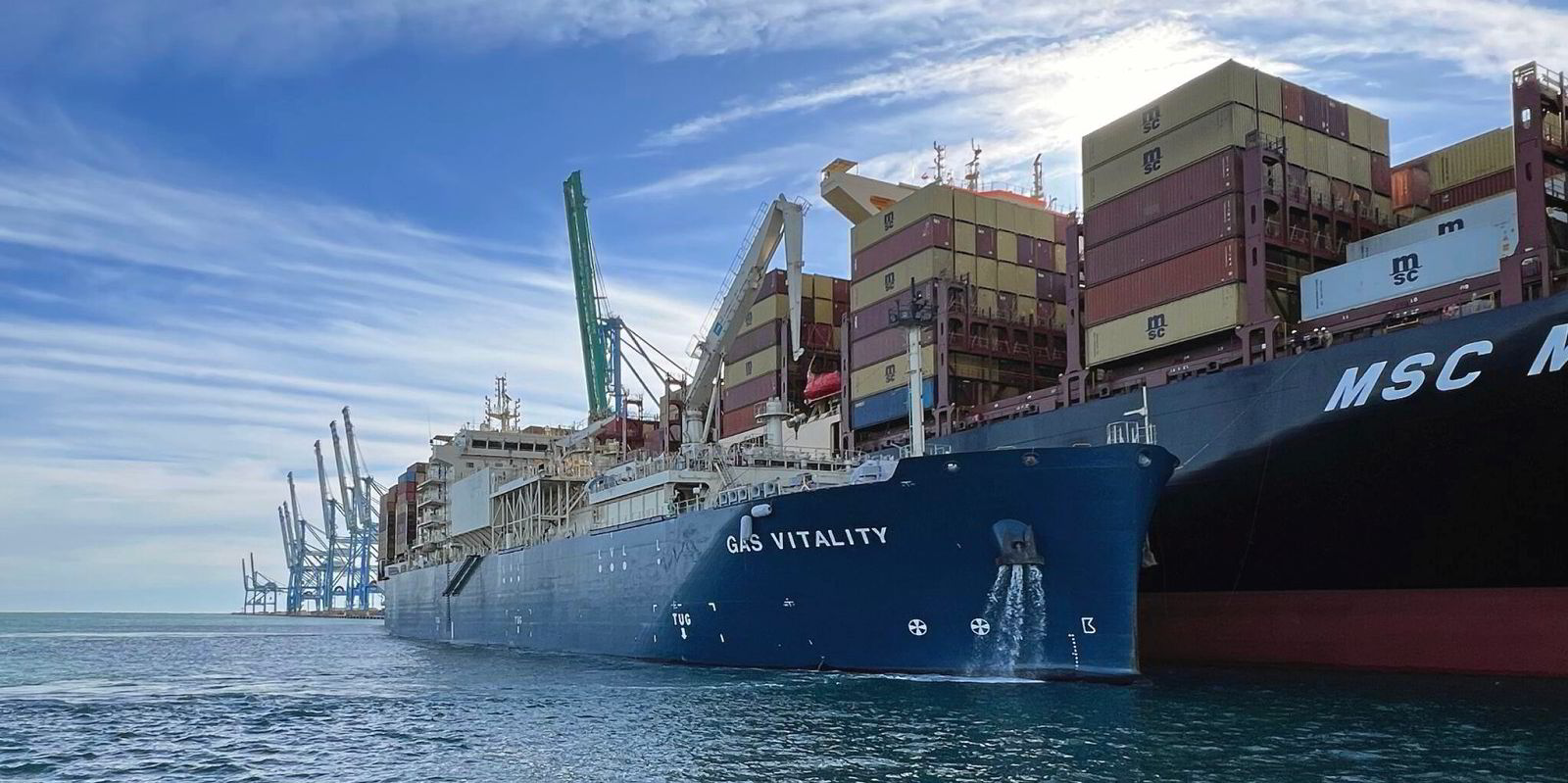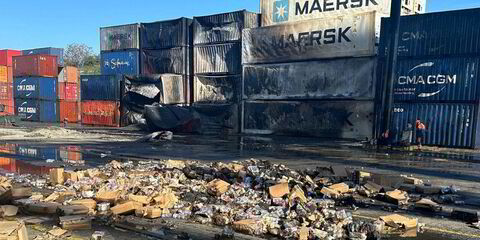By 2030, up to 40 new LNG bunker vessels will be needed to handle expected demand from LNG-fuelled vessels, according to TotalEnergies Marine Fuels.
Speaking at the 11th LNG Bunkering & Future Fuel Global Summit 2024 in Amsterdam, Denis Bonhomme, global sales and business development director for the French energy major’s fuelling arm, said there will be a nominal demand from shipping for 9 million tonnes of LNG fuel by 2025, depending on which fuels dual-fuelled vessels sail on.
But this is expected to grow to 22 mt by 2030 with the growth of LNG dual-fuel vessel orders.
He said this will require between 35 and 40 LNGBVs to cope with LNG bunker demand.
Bonhomme said there are currently about 51 LNGBVs in operation globally in Europe, Asia, the US and the Caribbean. Another eight to 12 are due to come online in the next two years.
DNV’s figures show there are currently 1,044 LNG dual-fuelled vessels with over half of these already in operation and 509 due to deliver in the next few years.
Bonhomme said TotalEnergies envisages relatively limited numbers of LNGBVs being allocated to Europe in the future as it is already well supplied with about 30 vessels.
Instead, the company, which has just taken a final investment decision on a new LNG bunker supply hub in Oman, sees demand for these specialised vessels growing in Asia, he said, highlighting incoming LNGBVs for China and Japan.
Bonhomme highlighted that the supply of bio-methane to decarbonise the shipping industry will be critical over the next few years.
But he said there will be competition from other industries for its supply.
He said TotalEnergies estimates that by 2030 there is potential for the marine sector to use about 39 terawatt hours (TWh) of bio-methane, which is equivalent to about 3 mt of very low-sulphur fuel oil equivalent.
The major is already producing over 1.1TWh of biomethane equivalent and is aiming to have about 10 TWh biomethane equivalent of production by 2030.
Bonhomme said that under TotalEnergies forecasts by 2050 two-thirds of the fuels used by the marine industry will be green fuels.
By 2030, 15% will be new fuels and of this 8% of LNG fuel demand could be for low-carbon versions such as bio-methane of e-methane.
He said TotalEnergies expects the LNG market to remain tight until 2026 to 2027 before new supply projects start to come onstream, primarily out of the US and Qatar.
But with this new supply LNG prices should ease in the next two years.
Bonhomme said there is a need to convince the global energy market that LNG is a good solution and it is important for the company to accelerate its decarbonisation efforts across the LNG chain.






